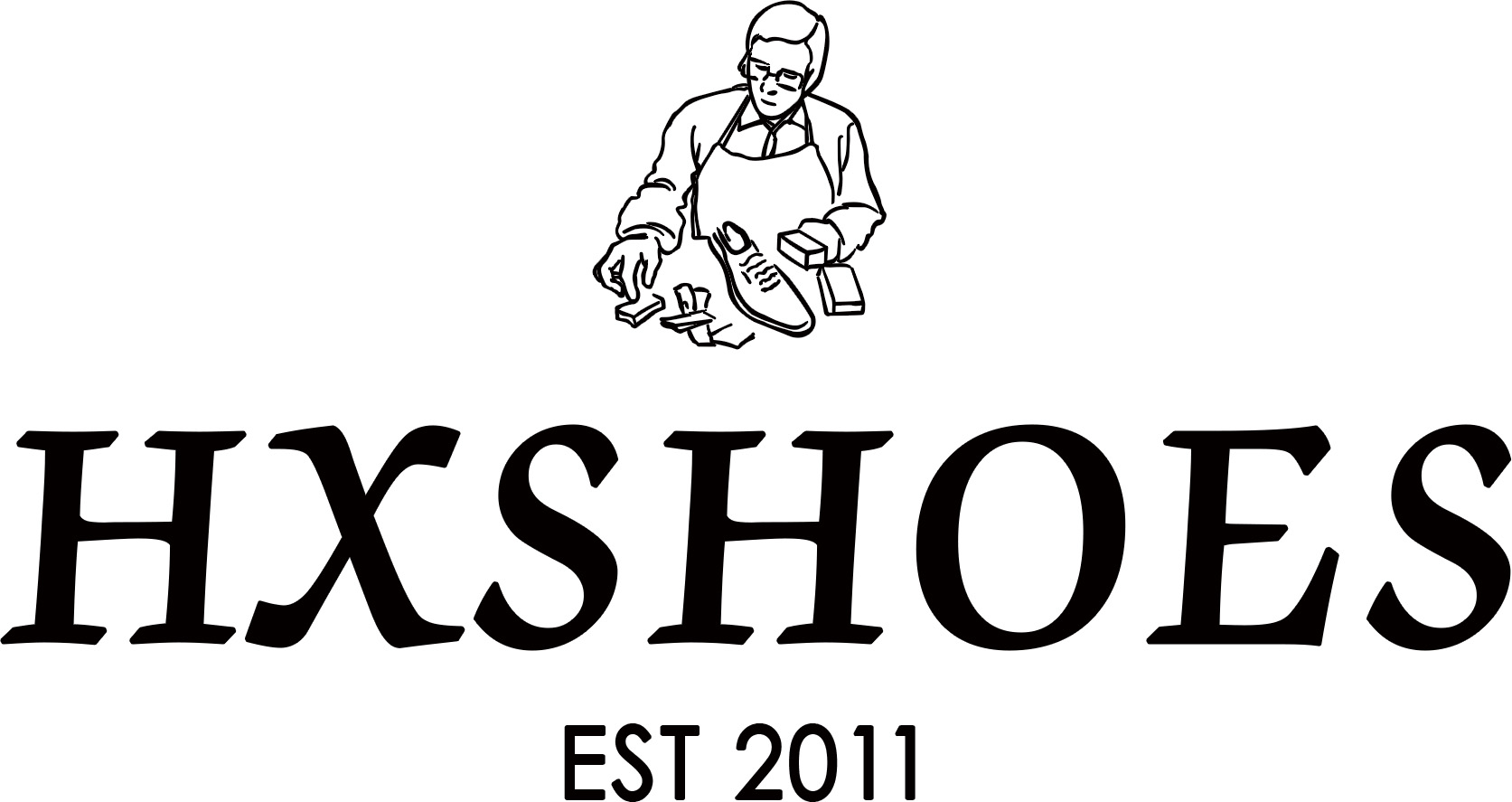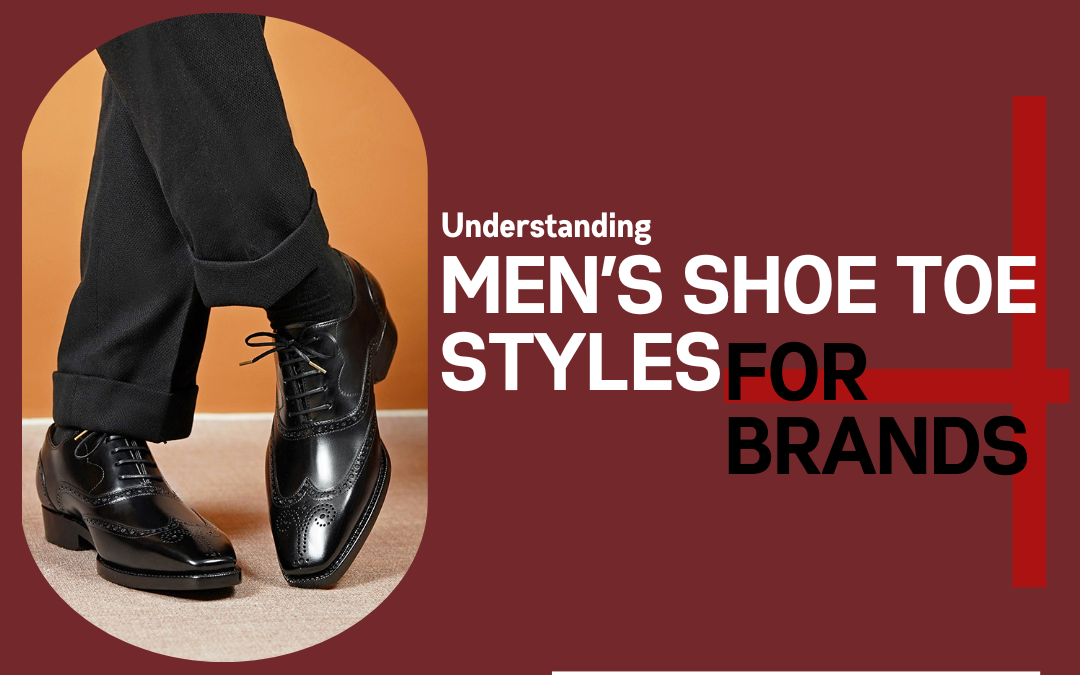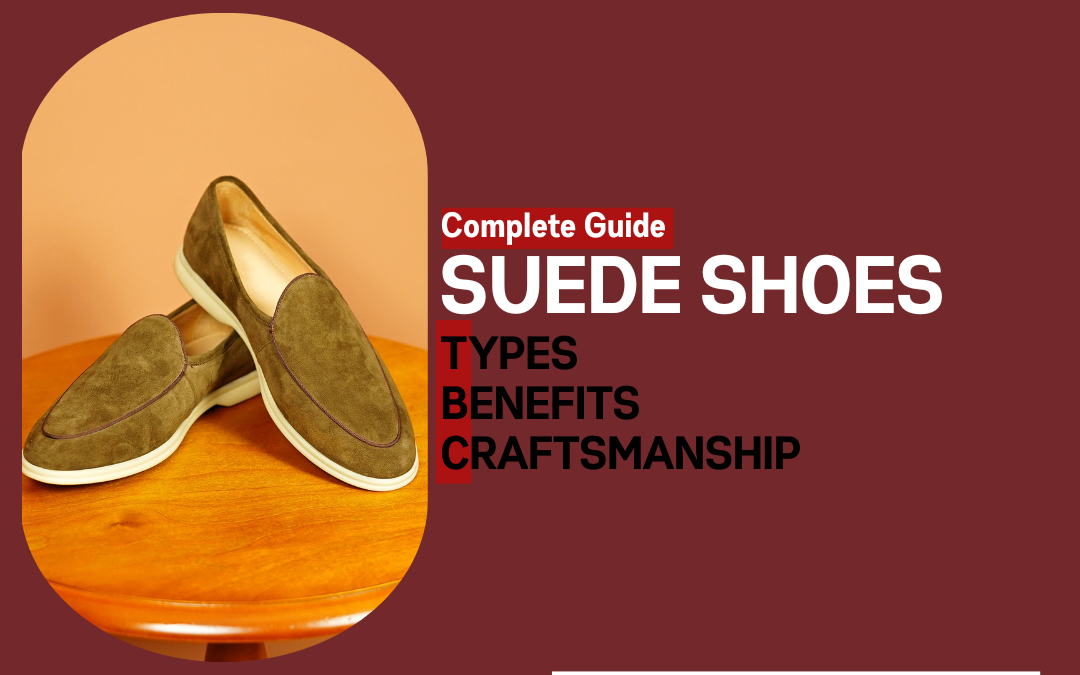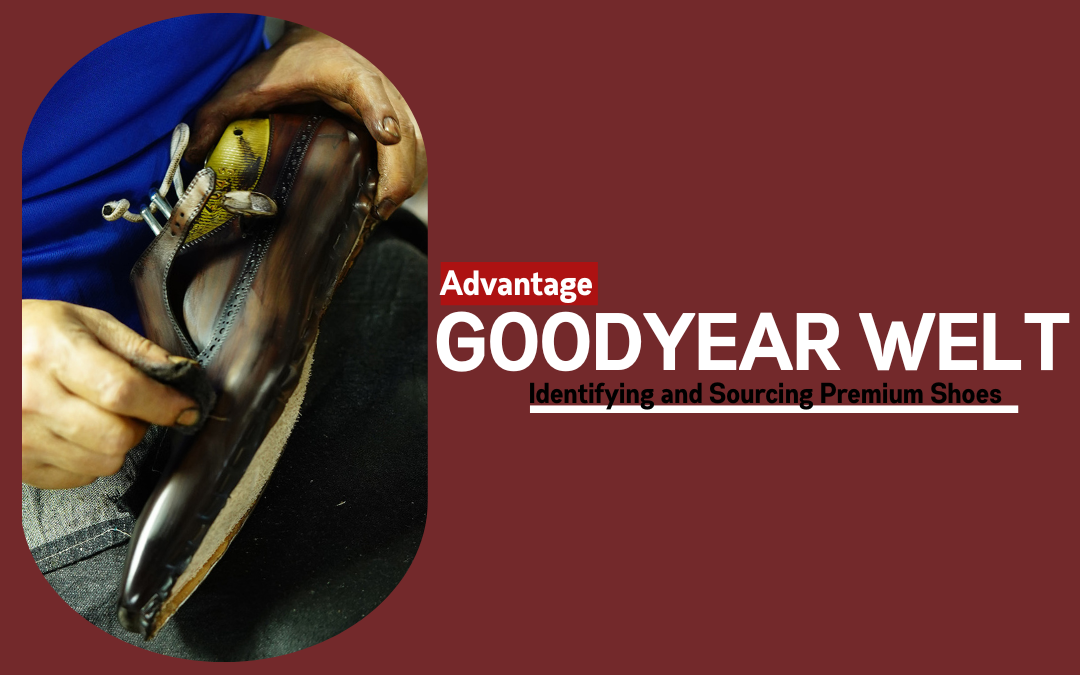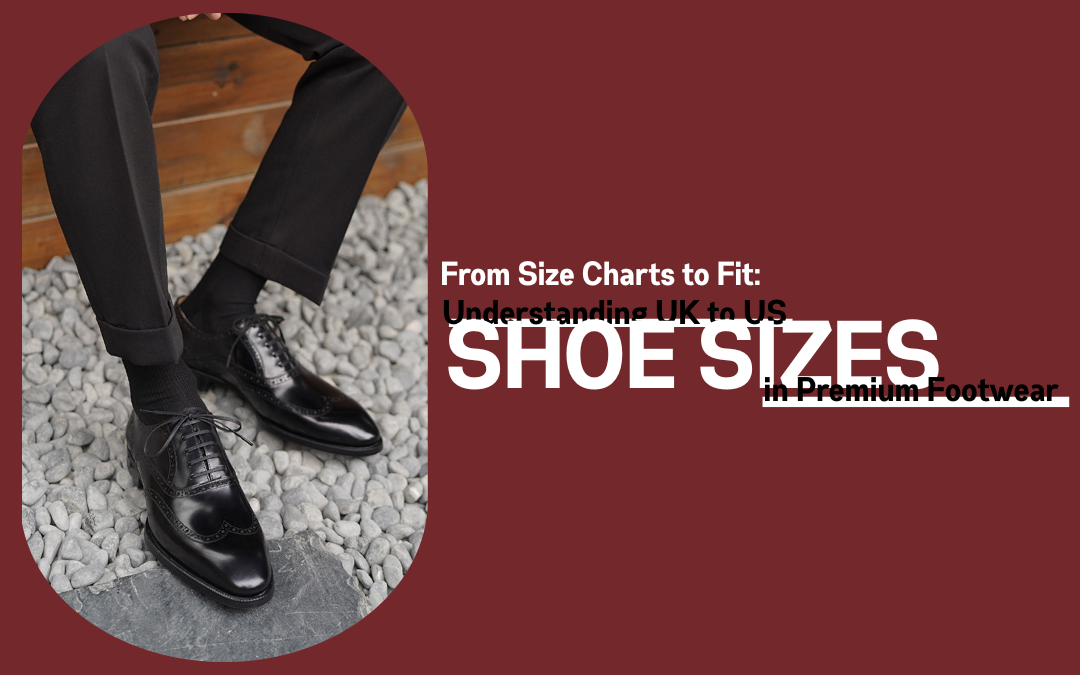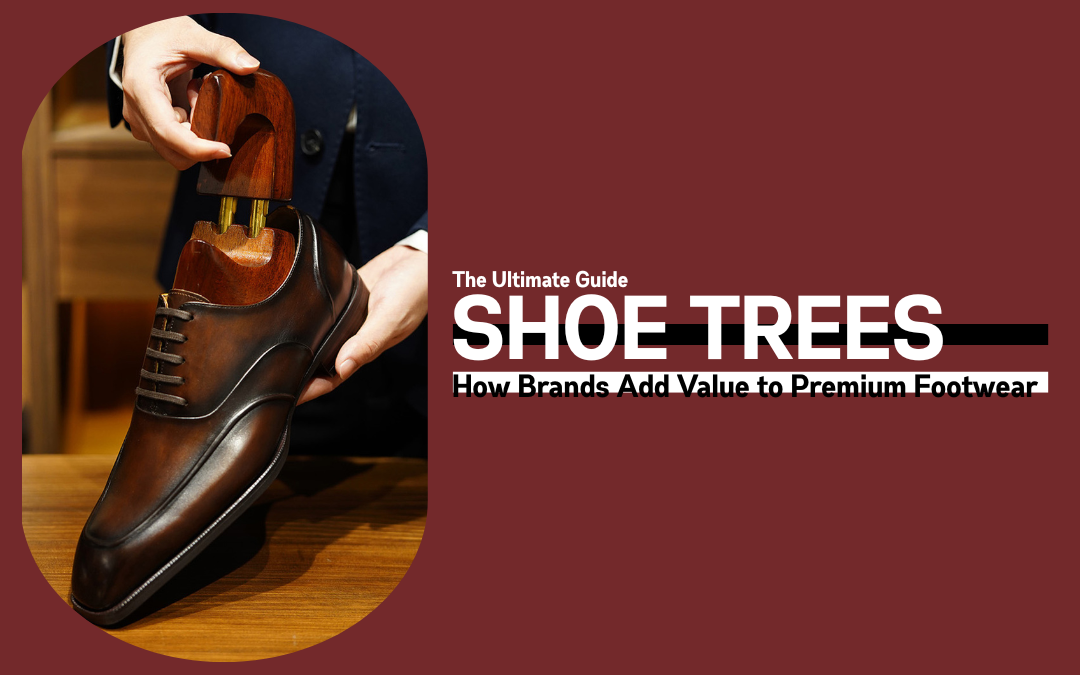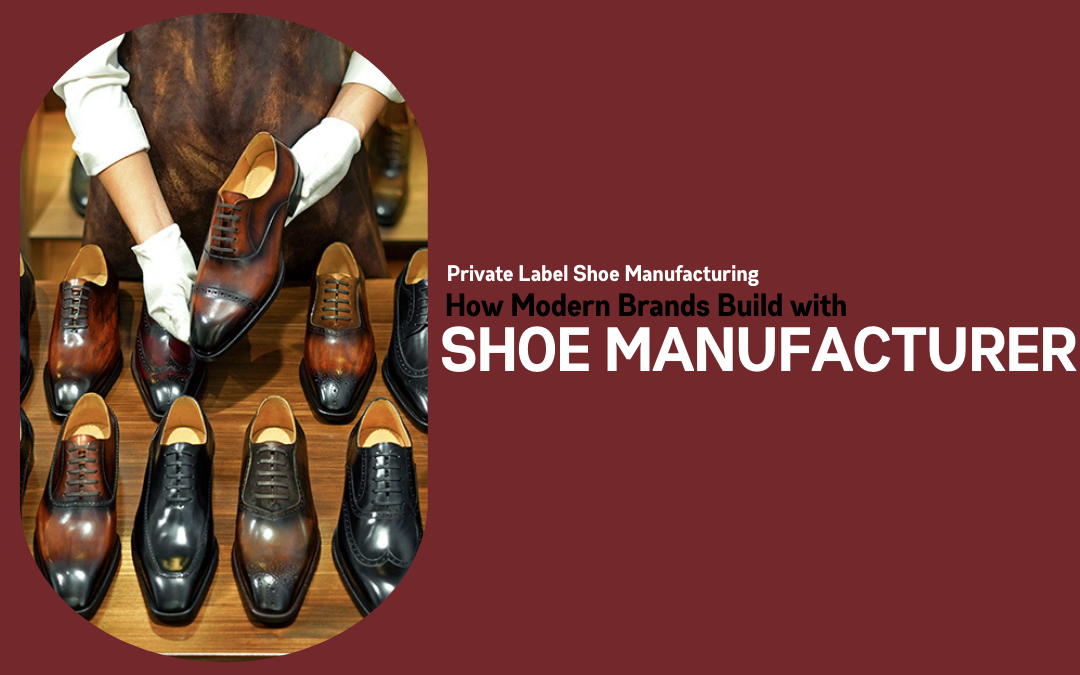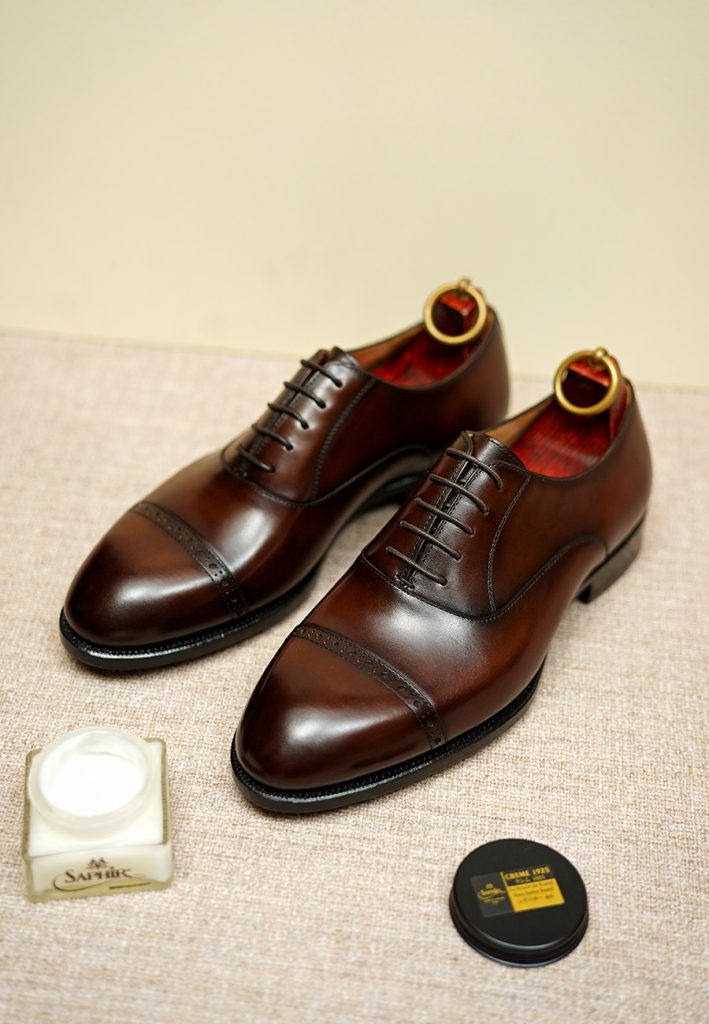
When it comes to men’s dress shoes, one detail often makes the biggest difference—the toe shape.
The way the front of the shoe is designed does more than just affect style; it also impacts how formal the shoe looks, how comfortable it feels, and how your brand is perceived.
Whether you are a wholesale buyer, a private-label brand, or simply someone learning about footwear, understanding men’s shoe toe styles is essential.
Toe shapes are the first thing people notice in a pair of shoes. They influence first impressions and set the tone for how the shoe will be worn, whether it’s for a black-tie event, an office meeting, or casual everyday wear.
From classic round toes to sharp wingtips, each style communicates something different about personality, fashion, and tradition.
For brands and B2B buyers, knowing the differences in toe designs is not just about fashion knowledge; it’s a smart business move.
Choosing the right toe styles can help build stronger brand identity, appeal to target customers, and improve sales in competitive markets.
The Main Types of Shoe Toe Shapes
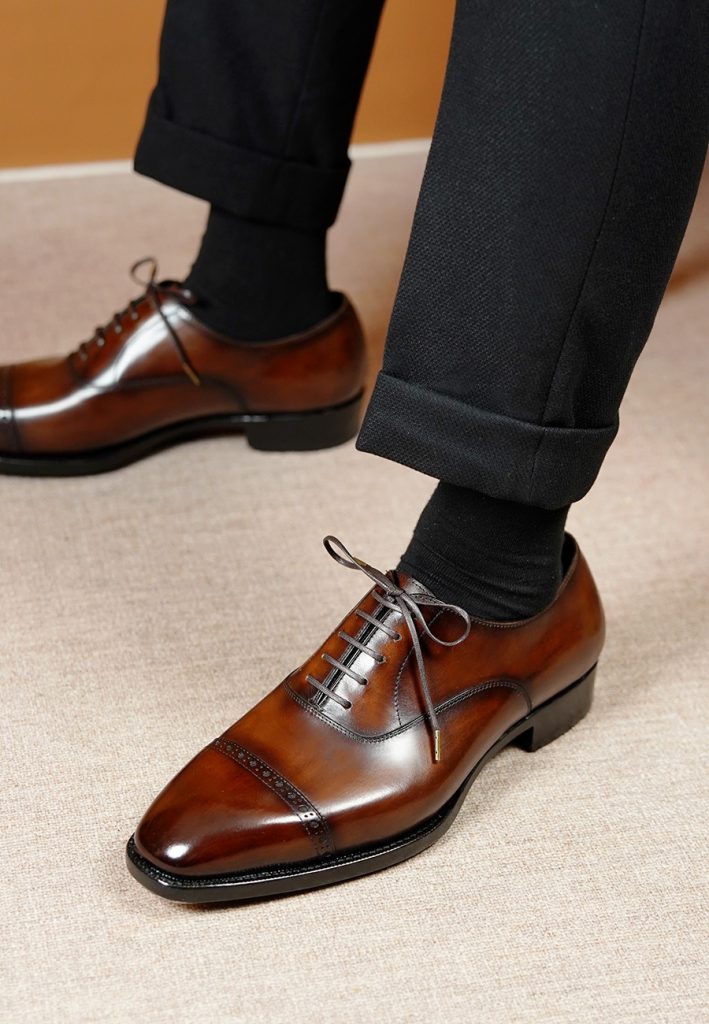
When it comes to men’s dress shoes, the toe shape sets the foundation for the entire look. Each style, from classic to modern, carries its own level of formality and comfort.
Understanding the differences helps brands and buyers choose designs that fit both customer preferences and market demands.
Let’s look at the most common classic toe shapes and what makes each one unique.
Classic Toe Styles
Round Toe
The round toe is the most traditional and timeless option in men’s shoes. It is easy to wear, comfortable, and works for many different occasions. Because of its balanced look, it appeals to a wide audience and is a safe choice for most collections.
- Versatile style: Suitable for both formal and casual dress shoes.
- Comfortable fit: Provides extra room in the front, reducing tightness.
- Classic appeal: Never goes out of fashion, making it ideal for long-term collections.
Square Toe
The square toe is more modern and has a sharper edge compared to the round toe. It often appeals to buyers looking for something different, though it is generally seen as less formal.
Square toes are popular in some niche markets but may not suit every customer base.
- Modern look: Stands out with clean, straight lines.
- Niche appeal: Attracts buyers who want a bold or trendy style.
- Less formal: Works better for casual or semi-formal occasions than black-tie events.
Almond Toe
The almond toe is shaped like an almond, slightly tapered but not as sharp as a pointed toe. It blends the comfort of a round toe with the elegance of a pointed toe, making it one of the most versatile and stylish options.
- Balanced design: Sleek without being too sharp or too round.
- Stylish and elegant: Adds sophistication while staying wearable.
- Wide appeal: Fits both business settings and social events, making it a great choice for diverse collections.
Formal and Statement Shapes
Cap Toe
The cap toe is one of the most recognized styles in men’s dress shoes, especially in Oxfords. It features a visible stitched line across the toe that creates a “cap” at the front.
This small but noticeable detail adds structure and polish, giving the shoe a refined and professional appearance.
Because of its timeless design, the cap toe is a standard choice for business attire and formal occasions, making it a must-have style in any men’s footwear collection.
Plain Toe
The plain toe takes a minimalist approach with no stitching, caps, or decorations at the front. Its smooth and simple surface creates an elegant, understated look that appeals to those who value clean design.
This style pairs especially well with tailored suits and can help brands present a sleek and modern image.
The plain toe is often chosen for its versatility, working equally well in professional and formal settings while maintaining a sense of effortless style.
Wingtip / Medallion Toe
The wingtip is one of the boldest and most decorative shoe styles. It is easily recognized by its pointed front with wing-like extensions that stretch along the sides of the shoe.
Many wingtips also feature intricate perforations, known as broguing, and medallion patterns on the toe for added detail.
This design makes the wingtip stand out and gives it a distinctive, stylish personality. It is a statement shoe that attracts customers who want footwear that combines tradition with flair, making it an excellent option for brands looking to offer bold and eye-catching designs.
Decorative Elements That Enhance Toe Shapes
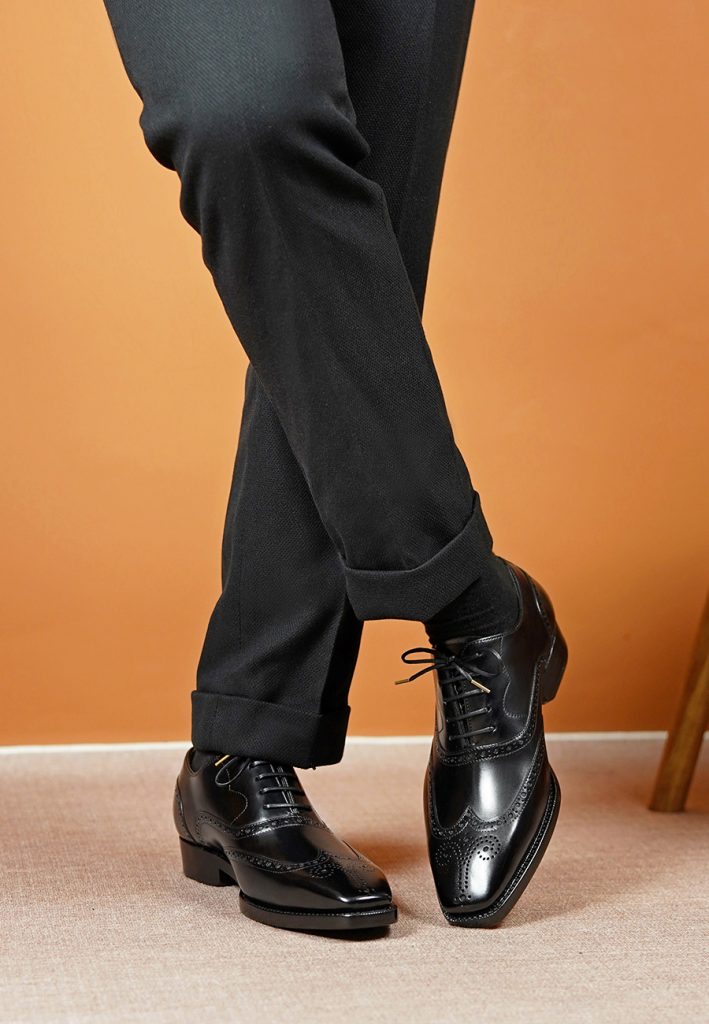
Broguing and Perforations
Broguing refers to decorative perforations or tiny punched holes added to the leather, especially around the toe. These designs range from very subtle to highly ornate.
For example, a quarter-brogue has light perforations only on the toe cap line, making it suitable for formal wear.
On the other hand, a full brogue (wingtip) features wing-shaped extensions and detailed patterns across the toe, giving the shoe a bold, stylish character.
Broguing adds personality to shoes while also shifting their level of formality. Light perforations feel polished and business-ready, while heavy broguing leans toward casual or statement wear.
Brands often use broguing to expand collections, offering both conservative and fashion-forward options within the same line.
Example: A plain black Oxford with light quarter-brogue detail works perfectly for corporate professionals, while a tan full-brogue wingtip fits well in creative or social settings.
Patina and Hand-Coloring
Patina is an artisanal finishing technique where layers of dye are applied by hand to create depth, shading, and unique color effects.
This gives each pair of shoes a rich, lived-in character that feels both premium and personal. No two pairs are exactly alike, which makes Patina shoes highly desirable in luxury markets.
For wholesale and private-label buyers, offering patina shoes can elevate a collection and differentiate it from mass-produced designs.
| Hengxin’s expertise in hand-coloring is especially rare within China, giving B2B partners an advantage in producing premium footwear at scale. By adding patina options, brands can position themselves as offering artisanal quality without losing manufacturing efficiency. |
Stitching and Welt Details
Stitching and welt construction play both functional and aesthetic roles in shoe design. The Goodyear welt is a traditional technique where the upper, welt, and sole are stitched together for superior durability and structure.
Shoes made with this method are highly valued because they can be resoled, making them last for many years.
Visually, welt details also influence how premium the shoe appears. A visible welt edge can add character and emphasize craftsmanship, while hidden or finer stitching creates a sleeker look.
Brands targeting premium buyers often highlight welt construction as part of their product storytelling, signaling long-term quality and heritage shoemaking.
Quick Comparison of Decorative Elements
| Element | Style Range | Effect on Formality | Best For Brands Targeting |
| Broguing & Perforations | From quarter-brogues to full wingtips | Light = formal, heavy = casual | Versatile collections that serve both business and fashion-forward markets |
| Patina & Hand-Coloring | Unique artisanal finishes | Always elevates presentation | Luxury or premium customers seeking exclusivity |
| Stitching & Welt Details | Goodyear welt, visible welt edges | Adds durability and heritage appeal | Premium positioning and customers valuing long-term investment shoes |
Matching Toe Shapes to Markets and Brand Strategies
Quick Guide: Toe Shapes by Market and Product Line
| Market / Product Line | Preferred Toe Shapes | Why It Works |
| UK / Europe | Almond Toe, Round Toe | Balanced elegance; versatile for both formal and casual wear. |
| United States | Cap Toe, Wingtip | Professional, structured look with bold options for business casual. |
| Formal Collections | Plain Toe, Cap Toe | Minimal and polished; perfect for weddings, black-tie, and office formality. |
| Lifestyle / Business Casual | Brogues, Medallion Toe, Square Toe | Decorative, expressive, and slightly relaxed for daily or semi-formal wear. |
Style vs. Region
Different regions often develop their own fashion preferences. In the UK and much of Europe, customers lean toward almond and round toes.
These styles strike a balance between tradition and modern elegance, making them versatile for both business and social settings. In contrast, the US market tends to favor cap toes and wingtips.
Cap toes project a polished, professional look, while wingtips, with their bold patterns, add personality to business casual wardrobes. For a brand entering both markets, offering a mix of these styles can create wider appeal.
Choosing Toe Styles for Different Product Lines
Toe shapes also help define the personality of a product line.
For a formal collection, plain toes and cap toes are reliable foundations. They are minimal, refined, and perfect for weddings, office attire, and black-tie events.
Meanwhile, lifestyle or business casual lines often benefit from more decorative elements such as brogues, medallion toes, or even square toes for a modern touch.
These styles allow customers to express personality while still staying polished enough for semi-formal settings.
The Manufacturer’s Role in Execution
Designing toe shapes isn’t only about creativity—it’s about precision.
The “last,” which is the 3D mold around which a shoe is built, determines how the toe will ultimately look and feel.
Even a small difference in the last can completely change the style from sleek to bulky.
This is why working with a skilled manufacturer is essential.
Hengxin, for example, has developed expertise in scaling artisanal details such as patina finishing and Goodyear welt construction.
The Goodyear welt, a traditional method of stitching the sole to the shoe for strength and durability, is often reserved for high-end products.
By being able to produce these techniques at scale, Hengxin gives private-label and wholesale partners the chance to deliver both premium craftsmanship and commercial consistency.
Conclusion: Toe Shapes as the Signature of Quality
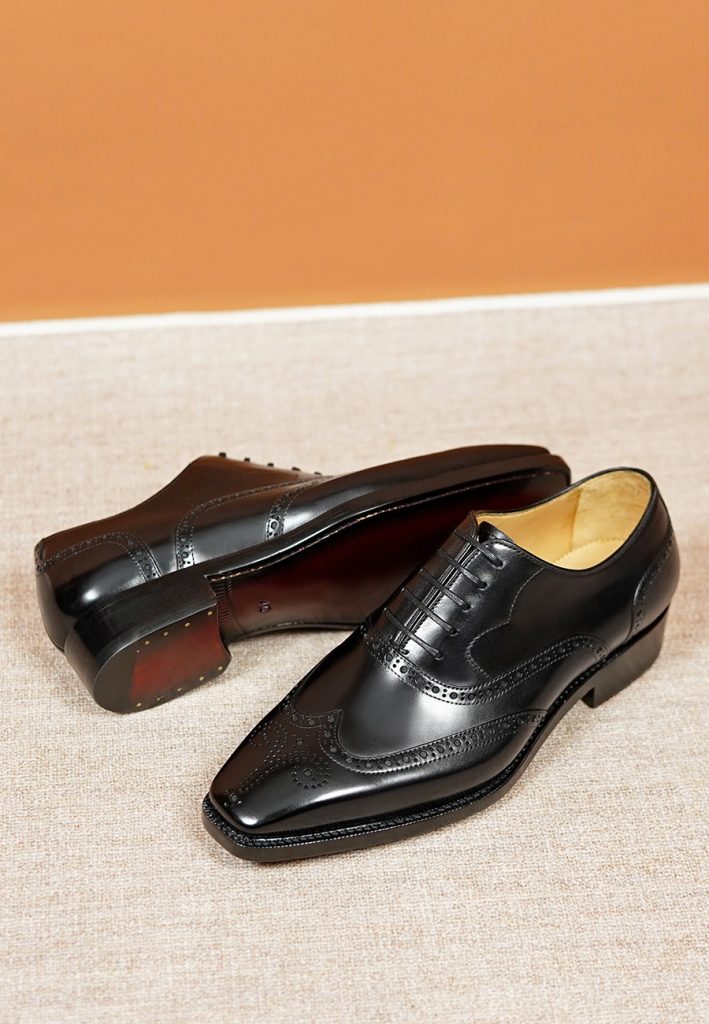
Toe shapes are more than just a design choice; they instantly communicate a shoe’s character, formality, and overall identity.
For B2B clients, selecting the right toe styles helps strengthen product positioning, align with regional preferences, and build stronger connections with target customers.
With Hengxin’s craftsmanship, brands gain access to both timeless shoemaking techniques and modern innovations, from durable Goodyear welt construction to artisanal patina finishing.
By combining precision, style, and scalability, Hengxin makes it possible for private-label and wholesale partners to offer footwear that reflects true quality and stands out in competitive markets.
FAQ
- What are the different types of shoe toe shapes?
The most common toe shapes are round toe, square toe, almond toe, plain toe, cap toe, and wingtip or medallion toe. Each has a different look and level of formality.
- Which toe style is most formal for men’s dress shoes?
Plain toe and cap toe styles are considered the most formal, especially in Oxfords, making them ideal for business and black-tie events.
- What is the difference between a cap toe and a plain toe?
A cap toe has a stitched line across the front of the shoe that creates a “cap,” while a plain toe has a smooth, undecorated front with no stitching.
- Why do premium shoes use Goodyear welt construction on toe designs?
Goodyear welt construction makes shoes stronger, more durable, and easier to resole. It also adds structure and a premium look to the toe area.
- Can patina finishing be applied specifically to shoe toes?
Yes, patina can be applied to the toe to create shading or a darker gradient, giving the shoe more depth, character, and a handcrafted appearance.
